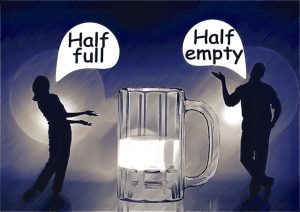Chapter 1
Why are we even fighting? Defining and Analyzing Conflict

Conflict occurs in interactions in which there are real or perceived incompatible goals, scarce resources, or opposing viewpoints. Interpersonal conflict may be expressed verbally or nonverbally along a continuum ranging from a nearly imperceptible cold shoulder to a very obvious blowout. Interpersonal conflict is, however, distinct from interpersonal violence, which goes beyond communication to include abuse.
Frameworks for analyzing conflict
Consider the conflicts you have experienced in your life. How many conflicts in your life seem to never get resolved? Maybe you think some of these conflicts have been resolved, because you have apologized (or received an apology) or done what someone has asked you to do (or someone has done what you asked) but yet there are still underlying tensions, issues, both overt or covert indicators that the conflict is still alive and well.
This occurs because discussions around and about the conflict take place at a surface level and don’t address the underlying issues that really need to be resolved. One of the most important parts of managing conflict productively and constructively is addressing the underlying issues. In this chapter, we will explore three frameworks for analyzing conflict. These frameworks help us identify the underlying issues commonly involved within conflicts.

